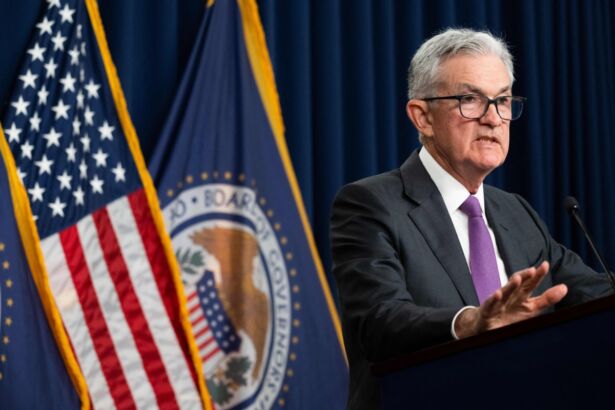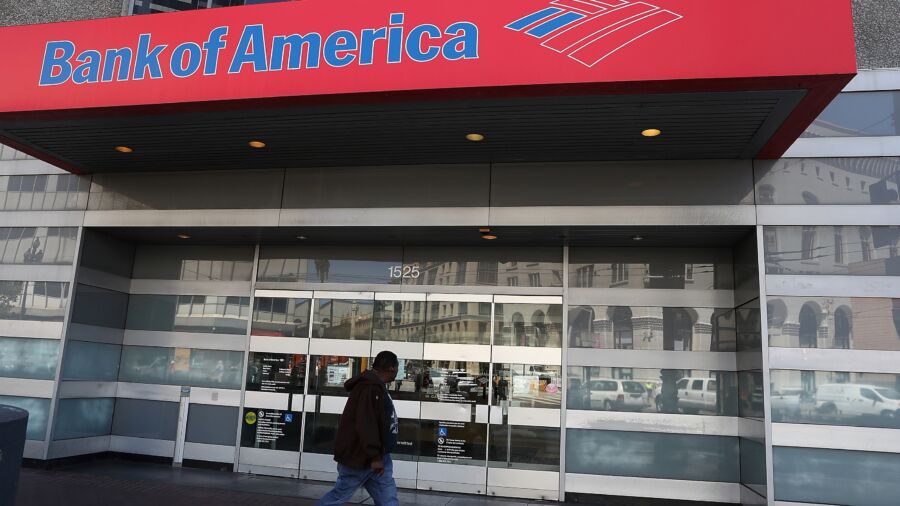A growing number of American banks have reported tightening loan standards for both consumers and businesses, according to a July survey conducted by the Federal Reserve.
A net total of roughly 51 percent of banks said they had tightened lending standards for commercial and industrial (C&I) loans to larger and medium-sized businesses (defined as those with annual sales of $50 million or more) during the second quarter, according to the Fed’s latest Senior Loan Officer Opinion Survey, or SLOOS.
That’s up from 46 percent of banks that said they had done so in the first quarter of this year.
The SLOOS is based on responses from 66 domestic banks and 19 U.S. branches and agencies of foreign banks and the survey was conducted between June 15 to June 30.
For loans to small firms, or those with annual sales of less than $50 million, a net 49.2 percent of banks said they had tightened credit terms, up from 46.7 percent in the last survey.
Excluding the 70 percent-plus levels reached at the height of the COVID-19 pandemic in 2020, the latest survey data show the largest net share of banks reporting tighter standards since the financial crisis in 2008.
“The most cited reasons for expecting to tighten lending standards were a less favorable or more uncertain economic outlook, an expected deterioration in collateral values, and an expected deterioration in credit quality of CRE [commercial real estate] and other loans,” the Fed said.
“Additionally, major net shares of banks also cited an expected reduction in risk tolerance, an expected deterioration in their liquidity position, increased concerns about funding costs and deposit outflows, as well as increased concerns about the effects of legislative, supervisory, or accounting changes as reasons for expecting further tightening,” it added.
Loan Demand Declining
Elsewhere, for American consumers, a higher net share of banks reported tightening credit card loan standards of around 36 percent, up from around 30 percent in the prior survey.
For auto loans, this came in at around 14.6 percent, a decline from the previous survey results of 27.5 percent but still one of the highest figures on record since 2011, not including the pandemic.
For consumer loans excluding credit cards and auto loans, a lower net share of banks reported tightening standards of 20.8 percent compared to the previous quarter of 23.6 percent.
“Overall, responses to the July 2022 and 2023 surveys indicate that banks’ lending standards have tightened since 2022 for all loan categories, including some that moved from being on the easier end of the range a year ago to being on the tighter end of the range in July 2023,” the Fed said.
While lending standards appear to be significantly tightening, demand for C&I loans is also down, according to the survey, likely a product of increased interest rates.
The Fed found that the net share of banks reporting strong demand for C&I loans from large and medium firms in the quarter was at -51.6 percent compared with -55.6 percent in the previous survey.

Further Interest Rate Hikes Likely
Most banks cited decreased customer investment in plant and equipment, decreased inventory financing needs, decreased merger, and acquisition financing needs, and decreased accounts receivable financing as the main reasons for weaker demand.
The Fed’s quarterly Senior Loan Officer Opinion Survey also showed that banks expect to further tighten standards over the remainder of the year, including for credit card and auto loans, which will likely lead to a further slowdown in lending, potentially exacerbating the risk of a recession, although the central bank no longer forecasts a recession this year.
The latest survey findings come as the central bank raised interest rates by another 25 basis points at the July Federal Open Market Committee (FOMC) policy meeting, bringing its target range to 5.25–5.50 percent; the highest in more than 22 years.
FOMC officials also noted they will continue to assess additional information and its “implications for monetary policy,” and may consider additional monetary firming to bring inflation back to their 2 percent goal.
Following the latest interest rate hike, Fed Chair Jerome Powell noted at a news conference (pdf) that lending conditions have been tightening while demand for loans is dropping off but cautioned that the full effects of the central bank’s monetary tightening policy are yet to be felt.
“[T]he economy is facing headwinds from tighter credit conditions for households and businesses, which are likely to weigh on economic activity, hiring, and inflation,” Mr. Powell said. “I think it’s really hard to tease out … how much of [the tighter loan standards] is from this source or that source, but I think what matters is the overall picture is of tight and tightening lending conditions,” Mr. Powell said, adding that the Fed intends to keep in place a restrictive policy until it is “confident” that inflation is coming down “sustainably” to its target rate.
“We’re prepared to further tighten if that is appropriate,” Mr. Powell said. “And we think the process still probably has a long way to go.”
From The Epoch Times


